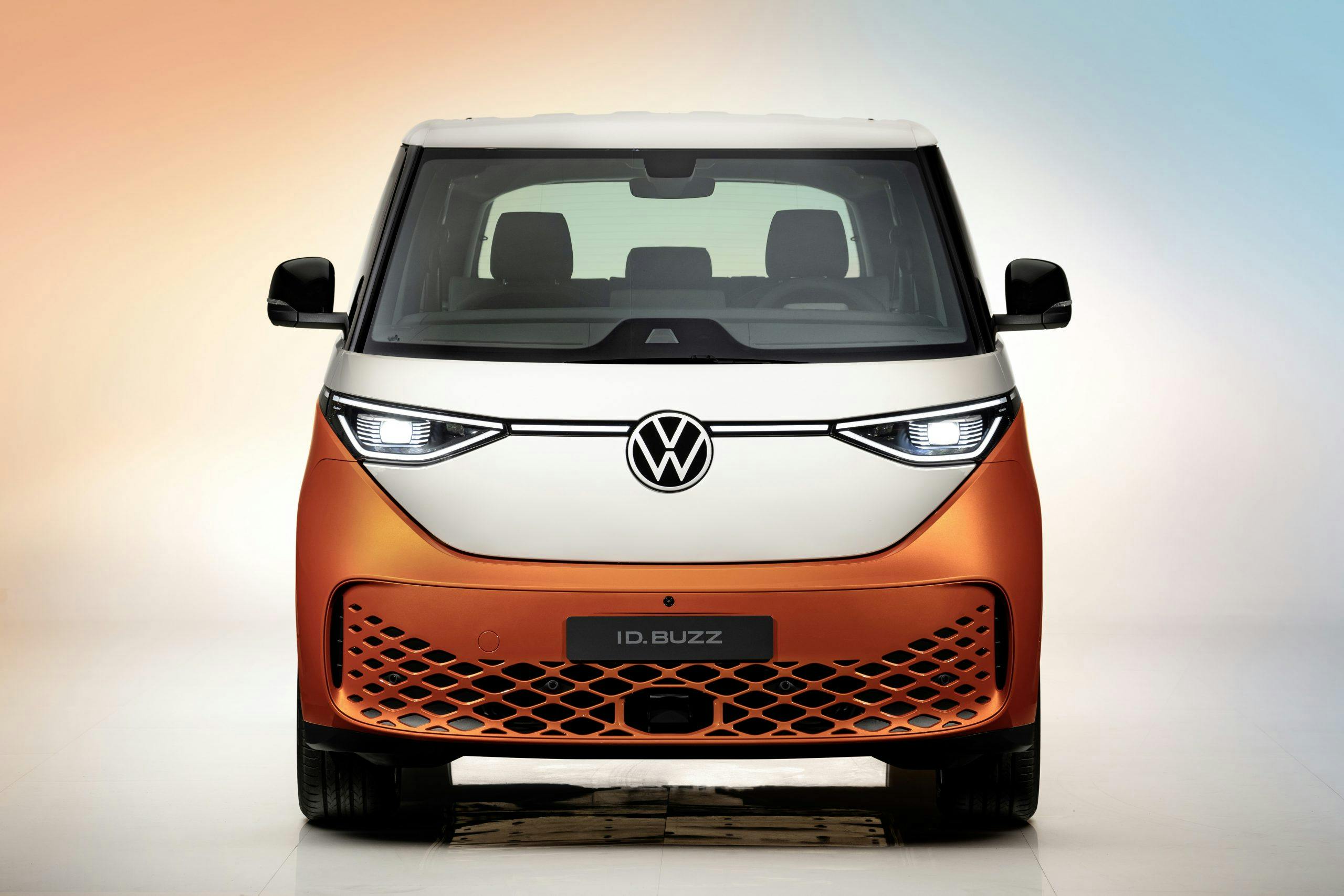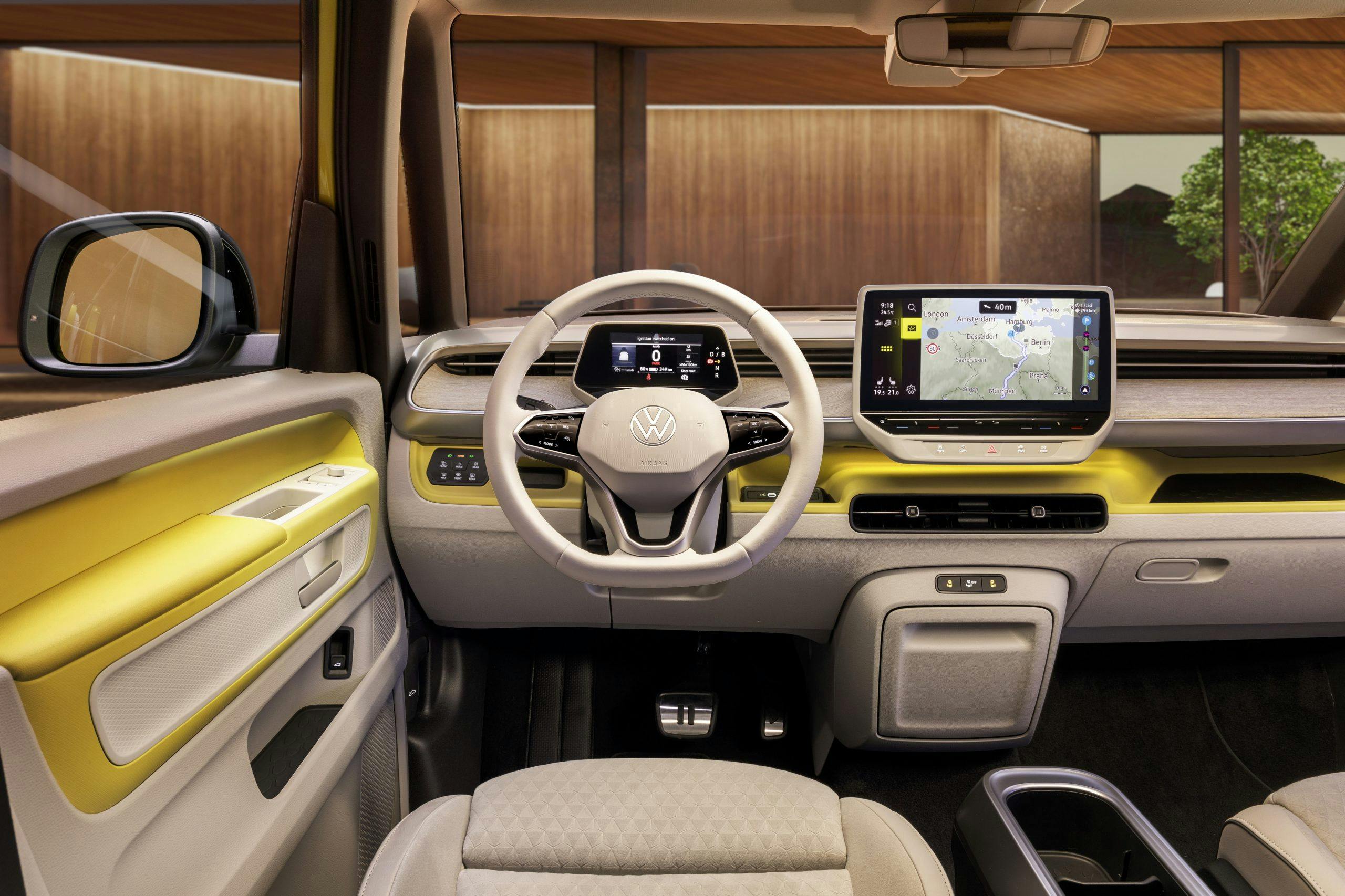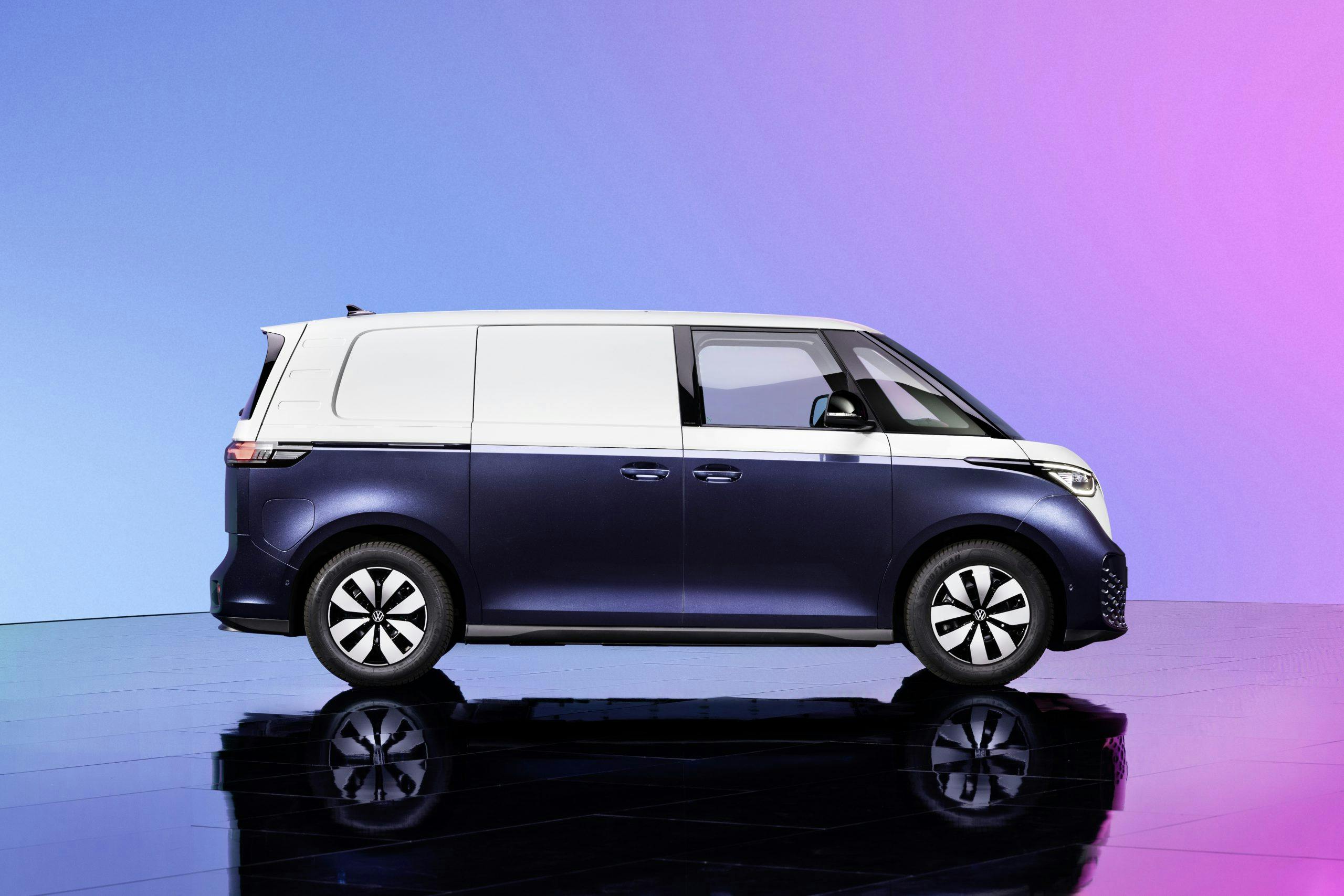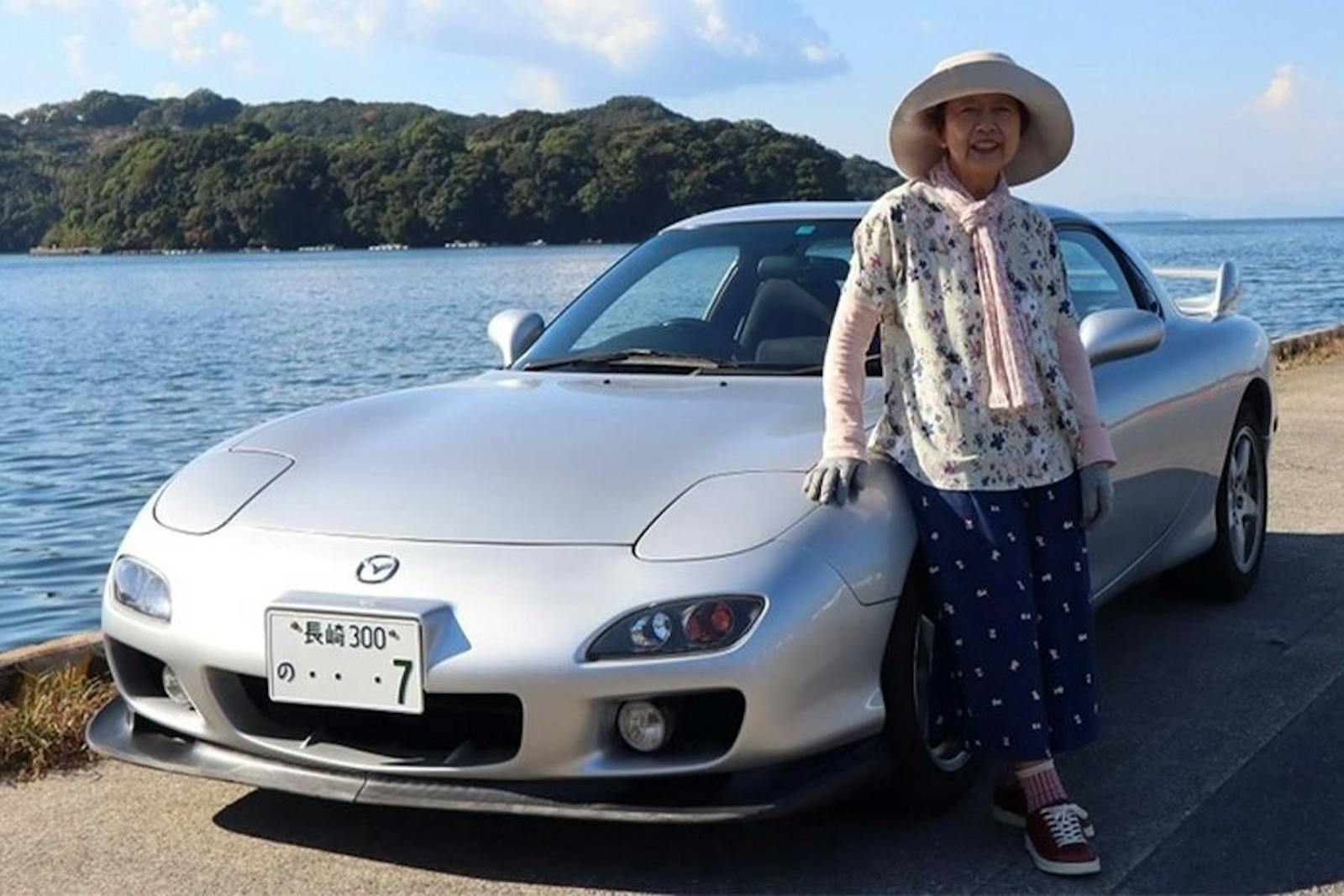Revealed: 2024 Volkswagen ID. Buzz
Whether you slept in one at Woodstock, passed the many that once clogged the right lanes of America’s freeways, or inherited one when your grandparents finally bought an Acura and moved to The Villages in Florida, the VW Microbus has spent six decades clattering into our hearts. Now, after many broken promises, VW plans to bring back the Bus, minus the clatter, in about two years. For real this time, it promises.
Buyers are pretty meh on minivans these days, but VW’s new all-electric ID. Buzz could be the 400-volt jolt that the segment needs to be hot again for the first time since magician Doug Henning was hocking Plymouth Voyager “magic wagons.” The Buzz uses much of the electric hardware from the ID.4 crossover including its 82 kW/hour, 240-mile-range battery, DC fast-charging capability, IQ Drive suite of safety tech, and 201-hp/229 lb-ft electric drive motor mounted in the rear—just as the engines were in the old Bus. Cue the Purple Haze.
The only whinge-point is that the U.S. won’t see its first ID. Buzz until 2024, assuming production schedules hold up in the face of a global semiconductor shortage as well as other supply chain issues. And we won’t get the plucky compact people-mover you see here, which goes on sale in Europe this fall in passenger and cargo versions. Rather, we’ll get a longer and more loaded three-row version with optional all-wheel-drive via a separate front motor. A “hand-raiser” page for it goes up today, March 9, for people who want to get in line early.
Because this is Volkswagen, which often seems to give buyers what they really crave only by sheer accident, the company won’t commit to offering a U.S. camper version. You can hear the arguments in Wolfsburg: “I know Ford is making bank on off-road nostalgia with the Bronco, and Subaru sells 600,000 units a year to people whose highest aspirations are sleeping in a tent on a car roof, but we … are … Volkswagen!”
So, the U.S. gets a long-wheelbase urban family mover for now, because “Americans need more space, right?” Those are the words of Jeffrey Lear, Volkswagen of America’s program manager for the electric MEB family, which so far includes the ID.4 crossover and the forthcoming Buzz. MEB is a German acronym for Modularer E-Antriebs Baukasten, or modular electric-drive kit, the mechanical basis for what is expected to be 80 percent of VW’s electric portfolio by 2025. Lest you think Lear is part of the problem, he describes his job as “spending all day fighting for stuff.” He allows that in 2025 there will be an ID. Buzz California (the camper version, sold in many places but not currently California or any other U.S. state), and he will probably have to fight the Germans for it with the same conviction that it took to capture Metz. We wish him Godspeed.
Does the Buzz look like the original Bus? Well … sort of. A flat nose, slab sides, clipped overhangs, and a squared-off rear are all vintage Bus cues. Of course, safety wins out and the driver and front passenger retreat behind the front axle, as they did back in 1990 with the T4 Eurovan. The driver and front passenger seats are also positioned inward for side-impact safety, meaning it’s a bit of a stretch over the wide sill to climb up into the driver’s seat. VW scalloped out the threshold to make an obvious footstep there.
At least the Buzz has less of a schnoz than its T4-T6 forerunners because there’s no internal-combustion lump up front making heat or threatening to pile-drive into the front compartment in a head-on collision. The result is a side profile that is new to the industry. If the original Bus was a “1-box” design per industry lingo, this is a 1.15-box design and perhaps the first entirely new car shape to come about strictly because of the switch to electric power. Late-model Japanese domestic microvans such as the Mitsubishi Minicab and Suzuki Every are perhaps the ID. Buzz’s closest analogues.
The Euro-spec Buzz—don’t call it the T7, that’s a separate gas-powered model for overseas markets—has a 117.6-inch wheelbase, 8.7 inches longer than the ID.4. We’d expect the Yankee-spec Buzz to get another four to six inches. The designers pushed the wheels out to the corners, making for hangar-like interior space under the tall roof. It needs it because the middle and third seat rows don’t fold down into the floor as they do in most current minivans owing to the 1100-pound box of lithium-ion batteries and the electric drive gear already taking up the basement. Instead, the Buzz’s seatbacks hinge down flat and VW will offer an optional platform that will extend from the middle row back to make for one continuous (though relatively high) load floor.
Dual power-sliding side doors join the front doors and the power tailgate to give entry to the Buzz. Minimalist design reduces the instrument panel down to two high-res screens. It echoes the cockpit of the ID.4 in almost every way, including the screen graphics. One big change: the drive-mode selector has been moved to a more conventional and convenient location as a column stalk. On the ID.4, it’s a twistable, misshapen wart on the side of the driver’s instrument binnacle, a feature that no doubt looked futuristic in the design studio but apparently hasn’t been a hit with drivers.
A center cabinet between the front seats features slide-out drawers and can be removed for walk-through access to the rear. Look closely; among the various Easter eggs the designer planted on the Buzz is a map of the world molded into one of the drawer sides. A glass roof and two-tone paint, such as this combo of “Lime Yellow” over “Candy White,” will be among the Buzz’s options.
It’s taken decades to replace the Microbus, but it is finally happening. Can’t wait till 2024? Well, there’s always EV West in California, which will convert your old Microbus to electric for something like $30,000. What would Ken Kesey do? Sit down, light a joint, turn on the Dead, and wait it out, man.






















It seems you guys still need to get your units straight with these EVs 🤣.
kW/h is not what you want to say.
kWh is.